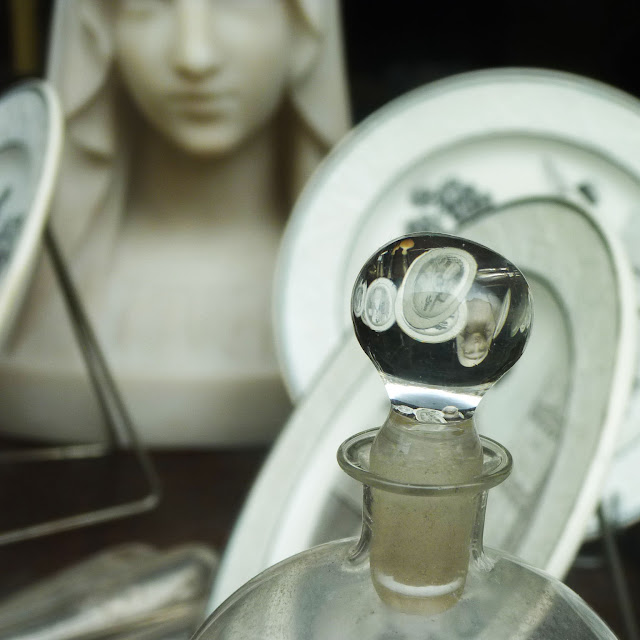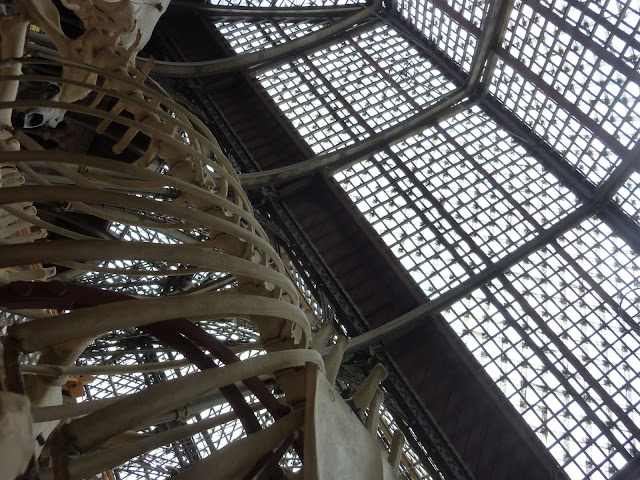The Marché aux Puces de Saint-Ouen is open Saturdays, Sundays and Mondays, and closed the rest of the week. I've been curious for some time now to see how it looks and feels on an 'off' day without the crowds. So yesterday morning, after dropping the kids off at school I decided to continue on towards the market. I did our usual route, coming at the market from Porte de Montmartre and then heading eastwards. The first thing that struck me was how wide all the roads in the market are without the people. These two photos are taken in the same road, rue Jean-Henri Fabre, that runs just north of, and parallel to the infamous peripherique. This road was being cordoned off as they were doing a film shoot of a car chase.

Had I not known, I would never have guessed that there was a vibrant market along this road three days a week. When I looked down at the pavement, however, I saw some clues. Dents from all the market stall supports.

Once I headed into the heart of the market it was obvious that this was a market on an 'off' day. Tags, rollers shutters, tags and more tags.


Banga Style.

Tags on more traditional doors.

The gates to a metal scrap yard in the heart of the market were open. I just managed to take this photo before I was hurried along les photos sont interdites madame, no photos madame! Look at all those lead dormer windows on the roof.

The market was eerily quiet.



With some lovely details. The red and blue on this 'no parking' sign are just sublime, even
les taggeurs have tagged discretely.

In a narrow market arcade.

A restored advertisement. Look at that sky!

A man opening up his café. Dogs seems to be a running theme.

This stack of old French windows looked gorgeous in the morning light.

And these two fellows are biding their time until they're let out again next Saturday.

For more photos of the Marché aux Puces de Saint-Ouen can be found
here (thumbnails) and
here (slideshow).
The market is open on Saturdays, Sundays and Mondays. Details of when the market is on can be found
here at 'Paris Perfect' (in English) and
here (in French and English).
































































